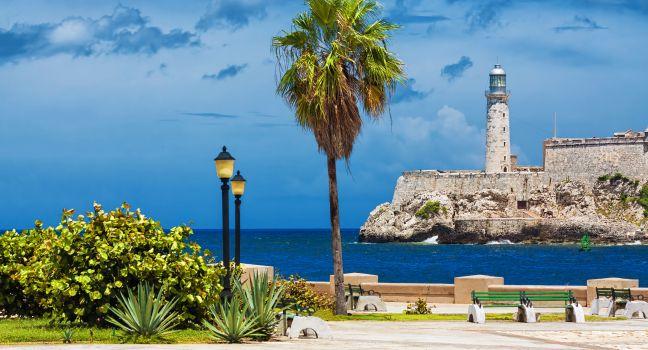Castillo de la Real Fuerza
Constructed in 1558 by order of Spanish king Felipe II three years after an earlier fortress was destroyed by the French pirate Jacques de Sores, this classic, moat-enclosed fortress was the residence of the local military commanders until 1762. The tower, added in 1632, is topped by the famous Giraldilla (weather vane), a nod to the one atop the Giralda minaret in Seville, the city whose Casa de Contratación (House of Trade) oversaw financial and shipping operations between Spain and its territories in the Americas. Havana's favorite symbol—it's even on the Havana Club rum label—the Giraldilla honors Doña Inés de Bobadilla, Cuba's lone woman governor, who replaced her husband, Hernando de Soto, when he left to conquer Florida (and search for the Fountain of Youth) in 1539. De Soto and his expedition went on to explore much of North America and were among the first white men to cross the Mississippi River. He died in 1542, but Doña Inés spent years scanning the horizon, awaiting his return. The current Giraldilla is a copy of an earlier bronze one toppled by a hurricane and now on display in the Museo de la Ciudad de La Habana. Today the museum houses an exhibition on Cuban navigation, dating from 1577 to today. On display are miniatures of the galleons that once passed through the island with gold coins, treasures, and documentation of maritime life over the centuries.




